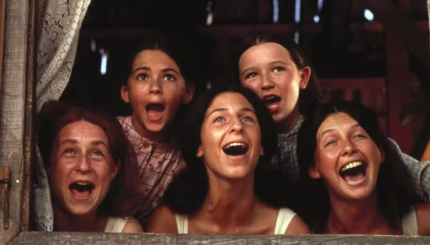There is a particular photograph that adorns the imagination of every engaged couple; it is of a young girl, age five, maybe six, dressed in the stunning garb of a would-be bride. Beside her sits her male counterpart, gazing into oblivion, the antithesis of interest. Indeed, this image evokes stereotypes of the young girl, particularly obsessed with her future wedding day, and the boy who cannot be bothered.
Like so many stereotypes, this notion contains a parcel of truth, and indeed aptly portrays the emotions of many couples. Yet again, like so many stereotypes, it is overly simplistic and hyper generalized. Though I have no memories of daydreaming about my wedding day as a child, as I grew older and began regularly attending the weddings of friends and family, I could not help but imagine the day that I would be the one under the chuppah, wedding canopy. I dreamt of the perfect tisch, an endless chorus of songs. I dreamt of the bedeken, being marched in to see my bride, who would be flanked on either side by our mothers. I dreamt of the ceremony, my bride circling me, and me stomping on the glass. I dreamt of the perfect reception, dancing, eating, and ending with gorgeous bentching, Grace after Meals.
When I met Marti, I knew that she would be the one. She would be the one who waited for me as I was marched into the bedeken. She would be the one who circled me and whose hand I would grab after breaking the glass. She would be the one with whom I danced, and she would be the one with whom I would build my home. Even as I write this, I feel overjoyed remembering that excitement.
As our dreaming morphed to planning, some of the excitement morphed into anxiety. We both realized how much of the wedding was tightly gendered. Though my bride-to-be shared my dream of a very traditional wedding, we also wanted to imagine ways of increasing all peoples’ involvement, regardless of gender. We wanted to include more of our female friends, and we wanted the ceremony to reflect our mutual commitment.
As we began planning, it became clear that many innovations which had been proposed to us were not feasible at our wedding. We were not inspired by certain halakhic innovations (for example, permitting women witnesses), and others felt overly intrusive or disruptive of our ceremony (while we love Rabbi Dov Linzer’s two-ring ceremony, we did not want to sign the ketubah under the chuppah).
Ultimately, we made a list of particular needs that we had, and researched potential solutions. We wanted the women to feel involved during the tisch, we wanted the bedeken to be a moment where we each covered the other, and we wanted female participation under the chuppah. To our amazement, we were able to find several solutions that allowed us to retain the feeling of the wholly traditional ceremony we had always envisioned, while incorporating more involvement of women than we had initially envisioned. Below are some ideas that we decided to incorporate:
As I sang with my friends during the groom’s tisch, a similar production took place just down the hall. Marti will had a bride’s tisch, with friends and family singing away. As I was marched in, on my brothers’ shoulders, for the bedeken I covered Marti’s face, and she too covered me. She replaced my regular kippah, with a new kippah that she made for me. As I kneeled in front of her, it was one of the holiest moments of my life.
After I was carried away from the bedeken, as our friends filed into the wedding hall, Marti and I met briefly with our rabbis and our families in order to watch as the witnesses signed our ketubah. It seemed bizarre that one of the three staples of marriage, shtar, the signing of the marriage contract, would occur in the absence of the bride. So, instead, we met in the room where my tisch had taken place, and in a small, intimate, setting we signed our wedding document.
Finally, we had several female friends who we wanted to honor. They signed our halakhic prenuptial agreement, and other secular documents, but we also wanted something for them to do under the chuppah; something of uniquely Jewish significance. My chevruta, study partner from Yeshiva, introduced me to the eighth sheva berakha, marriage blessing, of Rav Amram Gaon. Though there is no shem umalchus (the traditional defining aspects of a blessing) it is a persuasive and gorgeous prayer. Our good friend, Rabbi Rachel Silverman, recited it for us under the chuppah.
We sought a solution that would increase involvement of all of our guests (indeed, we also looked for ways of including our nonobservant and non-Jewish friends). There is a traditional greeting that we should be “zocheh livnot bayit neeman b’yisrael, we should merit to build a faithful home amongst Israel.” While we knew the wedding would focus on our building of a “bayit neeman, a faithful house,” we did not want to lose sight of the yisrael, that is, all of Israel. Like the chuppah above us, we pray to build a home in the image of Avraham Avinu, without walls, and open to all. Many of these ideas and innovations helped make our wedding day the holiest day of our life.



